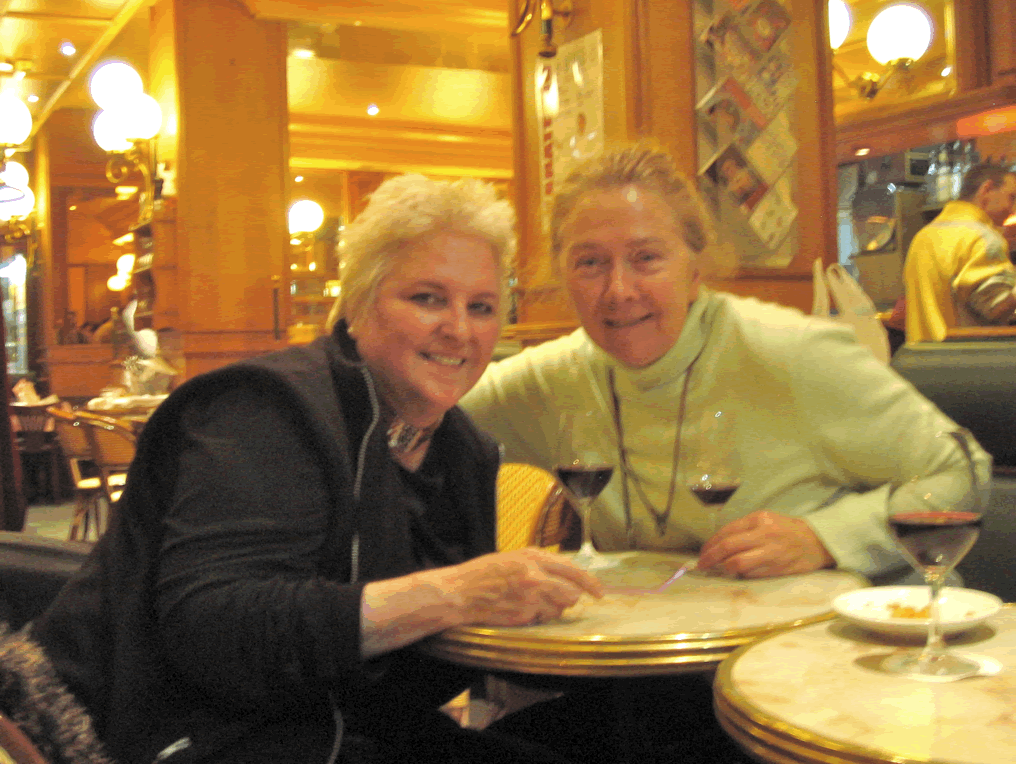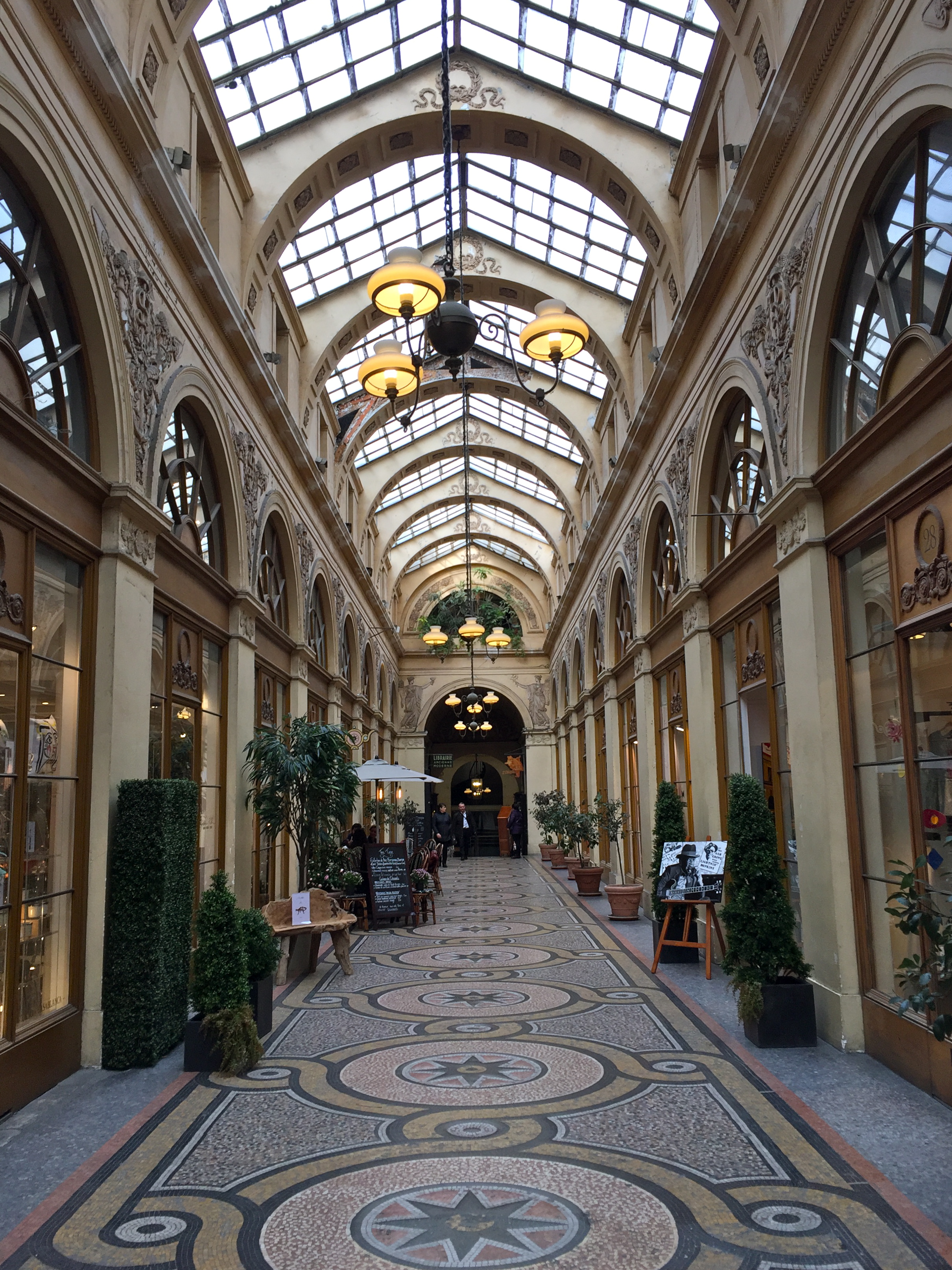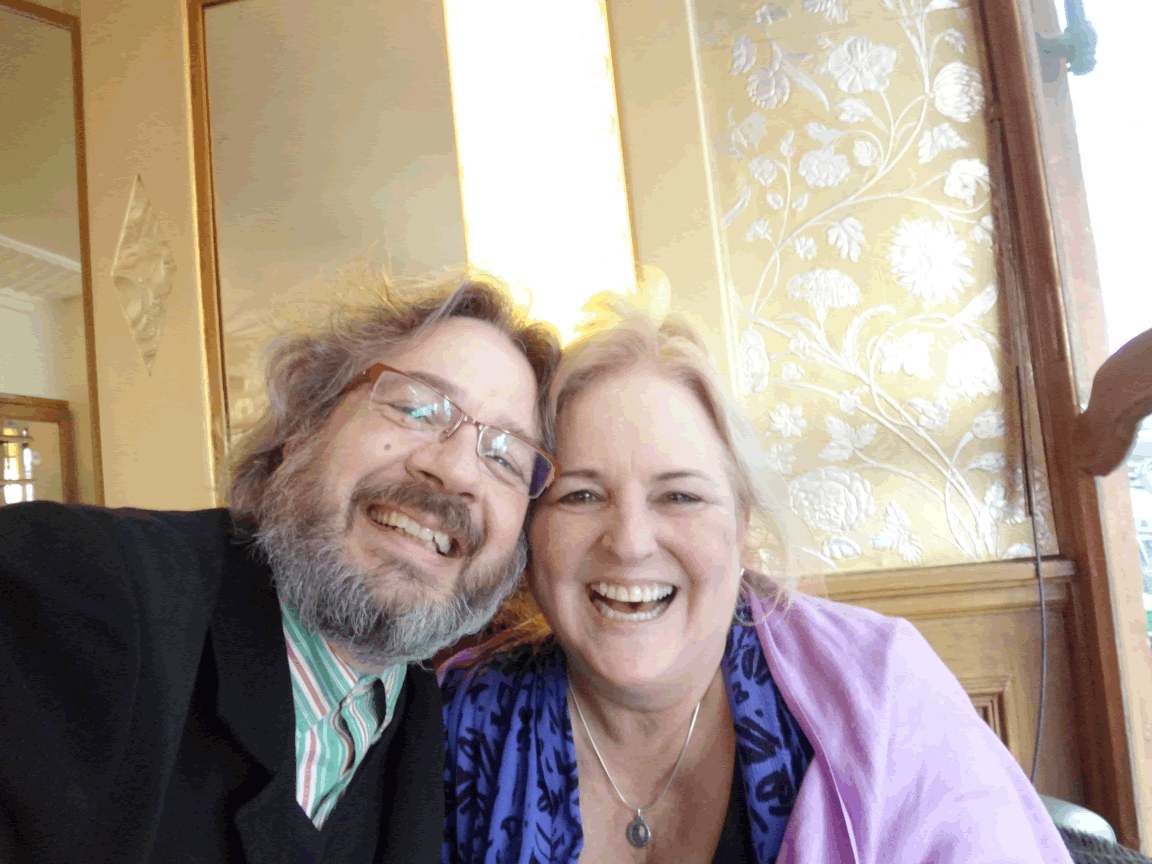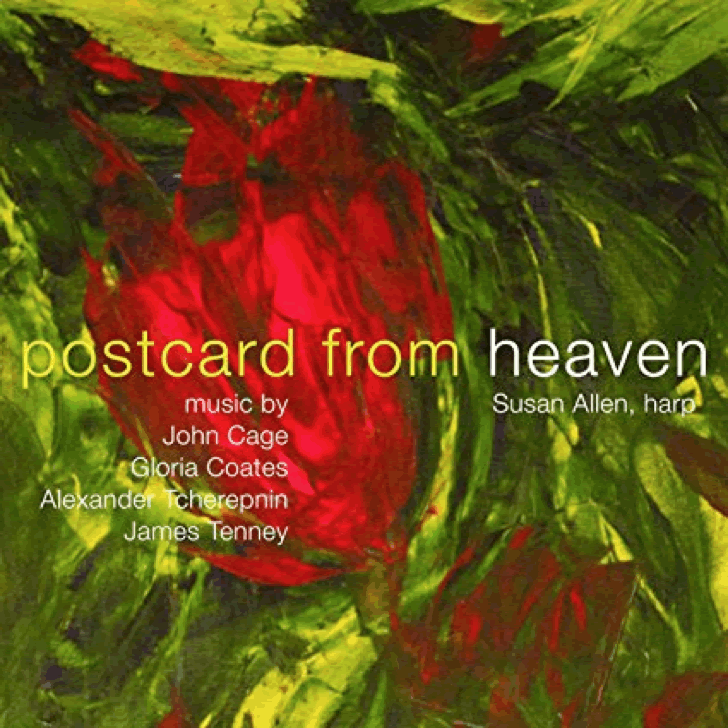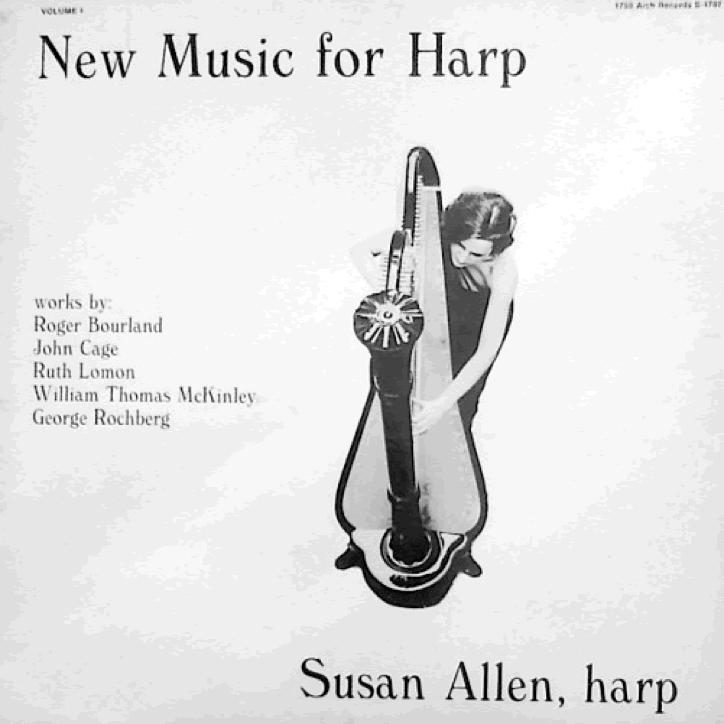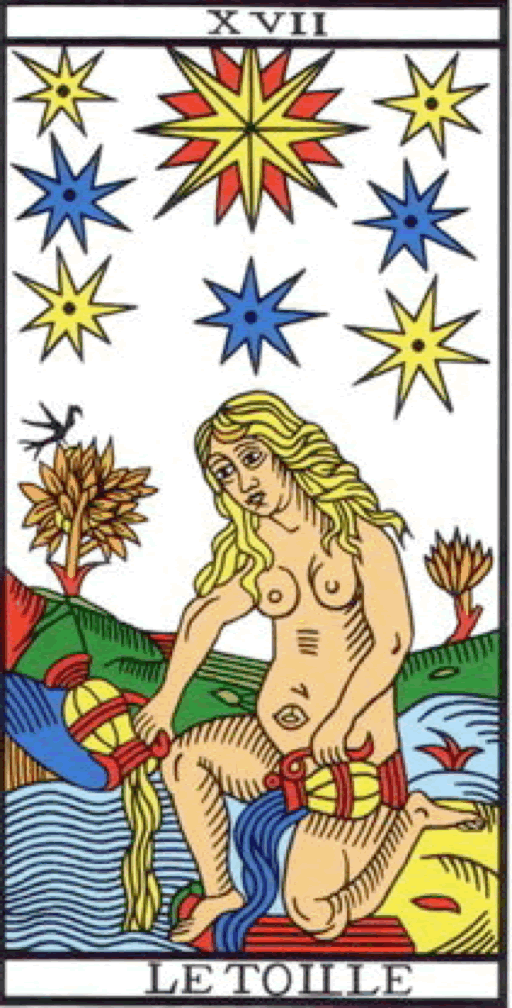Susan Allen and Jacques Burtin improvising at L’Instrumentarium, Paris, 5th of July 2012
IMPROVISING WITH SUSIE
« I did it better because I did not know Eduardo Chillida, Questions
I understood that I was a composer at the age of thirty, a few months after beginning to learn the kora. Yet I was composing music for a long time, without being aware of it: at the age of twelve or thirteen, I already improvised on a daily basis, spending hours at the piano. At that time, I was not really aware that this practice of music was, as such, a form of creation: because of the cultural presuppositions of the society in which I grew up, I believed that only a work lying on paper could be described as a composition. In that perspective, writing being the only touchstone, improvising was letting go, it was to engage oneself in a pleasant but unproductive occupation, which had no tomorrow, and which was the opposite of the visible work resulting from a conscious effort, mastered, communicable independently of any sound emission. When, after studying a score of Bach, Saint-Saëns or Satie, I let myself go to the exploration of the sonic possibilities of my instrument, I was well aware that I was engaged in an important occupation, which involved all my being: nevertheless it engaged me (or seemed to engage me) only on the instant. It was basically an activity close to a child’s play — the game to which the child devotes himself with gravity and carelessness. It would take me many years to understand the two following things: first, improvisation is a form of creation in its own right, the stakes of which are the same as those of composition, even if their procedures seem — often wrongly — different (each of these activities having its risks and its virtues); secondly, the improviser, if he wants to go to the end of himself, must indeed find in his art the enthusiasm, the emotion, the capacity of forgetting the world which he had as a child when playing. At that time, the time of long piano improvisations, sometimes I may write musical ideas, a few measures, a short page, rarely more. This was not enough for me to believe that I was a composer. I felt deeply as an amateur, a demanding amateur with respect to himself, trying to share his experience with his friends, his family, but not pursuing through music any « serious » — nor professional — purpose. In the same years, I began writing poems and tales of horror and fantasy. Hundreds of pages saw the light, collections of poetry or short novellas ready to be printed. I was not published — with the exception of a few poems in poetry journals; nevertheless, I really felt I was a writer. I did not need the backing of society, the judgment of authorized people to know that, even if I was almost the only one to know. On the contrary, I did not see myself as a composer when I shared my music with other people... At the age of thirteen or fourteen, I had been really touched by the wing of the angel of vocation in terms of writing (and there was actually a moment, an hour, a place where I felt that I would be a writer), however this was not the case in regard to music. I did not see me as a composer. I practiced the piano (and consequently the improvisation) in that way until the age of thirty; at that age, a friend of mine, a Benedictine monk, placed a kora in my hands. That was in 1986. Learning to play the kora was having a fresh start. It was a real love story: I studied the instrument for hours every day, applying myself to do all the exercises, all the scales that my master had indicated to me, then deciphering the new pieces to be studied, and only allowing me some escapades after having obeyed all the instructions given to me. One day, during one of these sound explorations, a piece was suddenly born of my fingers. I might as well say that it descended upon me. I took a pencil and began to write it. As the measures, and then the pages were filled, a certitude invaded me: I was a composer. It was not the feeling of the vocation, the irrepressible appeal that the young poet had felt: it was the calm evidence of a state, or function, that was in me and that until that hour, I had ignored. The assiduous work on the instrument as well as the meetings with other musicians made me play soon in public; at the request of my master, I also started to teach the instrument. As a composer and performer, I had naturally begun writing for the kora, but soon I came to compose for other instruments, my musician friends being happy to have new works to play in public. Writing was a great adventure, new to me; however I had not turned my back on the practice of improvisation. In concert, I only authorized myself to interpret the pieces I had written ; nevertheless I knew that part of me aspired to meet other musicians with whom I could explore the unwritten dimensions of music. This is how I successively met a French pan-flute player — Jean-Claude Mara — and a Japanese koto player — Brother Damien Takafumi Harada — alongside of whom I improvised, in churches and cathedrals, and with whom I recorded CDs. Gradually, I came to understand that improvisation and musical writing were the two sides of the same coin, each one as indispensable to me as the other; I also understood that I had not become a composer at the age of thirty with a kora in my hands but that I had always been, even though I had not written anything substantial up to that age. From a practical point of view, the difference between writing and improvising was radical to me, because of my personal history. Indeed, having started practicing composition in a self-taught way (had I done a little music theory in my younger years, I had never taken composition lessons and never went to a Conservatory or a music scool), my writing was relatively classical, while improvisation invited me to all possible liberties. (Obviously, writing can also be the field of explorations and adventures, and improvisation may be the theatre of a kind of mental idleness, of sterile fluttering. My experience, fundamentally double, allowed me to weigh he risks and the benefits of each of these practices.) In 1987, I started teaching the kora : two or three times a year, I gathered a group of students and we worked for a week. In 1997, I went to California with my kora ; in 1998, I went on tour in Japan with Brother Damien Takafumi Harada. From 2002, I was invited by the School of Fine Arts of the Spanish Basque University, to run introductory sessions on interdisciplinary creation and performance. I started writing on improvisation, by means of poetic aphorisms or paradoxes that I proposed to the meditation of my students. In the same years, one meeting was decisive among all: that of Susan Allen. I met her in the following circumstances. In 1997, I went to San Francisco, invited by friends who had just settled there. I crossed the Ocean with my kora, wishing to meet musicians, music schools, and producers. I walked the hills of the city with my instrument; I also spent many hours on the phone. A cultural attaché of the French Embassy in Los Angeles gave me the name of Susan Allen. I did not know anything about her, her extraordinary curriculum, her research on improvisation. Seized with an intuition, I immediately phoned her. She was interested in my approach. I was soon to return to Europe, and she offered to exchange recordings so that we could get to know each other better, before meeting another time. But I felt that this encounter should not be postponed and that I had to go to Los Angeles, even for a few hours, in order to meet her. From our first meeting, we improvised. We had the feeling of a promise, of an appeal. I was not, by far, as I said, the first musician with whom Susan improvised. But my approach of the kora was special (since I did not play it in a traditional, ethnic way) and, above all, I was open to all experiences. Then, every time Susan came to Europe, we would meet — always in Paris. We improvised by day, and walked by night in the city, talking about poetry, philosophy, Baudelaire and Walter Benjamin. Improvising with Susie was, every time we met, every time we pressed on the « record » button, taking a new path. With other musicians, there were often predetermined (sometimes unconscious) frames, an attachment to melody, harmony, rhythm, or style. With Susan, there were no more categories, no more landmarks — and (last but not least) no hierarchy between us. The rules we perchance gave ourselves were only used once. We just tuned our instruments before playing; but we could also voluntarily detune while playing. Nothing was forbidden. And we never got bored, because there were always passion and commitment. One of our most remarkable projects was a series of concerts in five Parisian churches. These concerts would have been totally improvised. Each place would have been acoustically explored beforehand, for a proper sound diffusion, and we would have been inspired by its architecture and its history. As a prelude to this project, we locked ourselves in a studio to record a series of improvisations. This session took place at the Espace Camac in Paris, in the XIXth arrondissement, at the invitation of its Director, Jakez François. It was January 12, 2007. Our CD « Renaissance » was made up of a selection of these pieces.
Looking for churches...
Teaching, as I said, was as close to our hearts as making music, and we often talked about music education. Before knowing each other, Susan and I had developed similar approaches to teaching. We liked to bring our students together for several days in a special place, sharing life and music in particular places such as convents or old farms. We therefore formed the project of simultaneously conducting a harp session and a kora session so that our respective students could have fruitful and productive exchanges. Each of our meetings was also an opportunity to explore a new district of Paris. The Latin Quarter, around the Sorbonne, between Saint Germain des Prés and the Rue de la Montagne Sainte-Geneviève ; the fifteenth district and its merchants of fruit, wine, and cheese; the Northern districts of Paris, from the Sacré-Cœur de Montmartre to the Place de la République, by stopping at the brand new Centre Cent Quatre, in which intercourses between Parisian students and students of CalArts were to take place ...
In front of Notre-Dame de Paris,2007
Needless to say that every time we passed a church that seemed interesting to us, we visited it and experienced its acoustics with our voice or some clapping of hands. Our first proposals to the churches did not raise enthusiasm (the people in charge of the concerts seemed a little frightened by our music) but we never abandoned the idea of the « Cinq Églises » project... We were even thinking of a new cycle of concerts — Five Cities — that would have been broadcasted on the Internet; and we designed a performance-concert with an electric harp, my gravi-kora (an electroacoustic kora created by Robert Grawi) and chance projected multi-format videos : Les Sources mobiles (Mobile Sources). Let’s go back to our Parisian walks... I still remember our first stop at the best salon de thé of Paris, in the Saint-Louis island, a place devoted to chocolate: the Charlotte de l’Isle, run by Sylvie Langlet, who was to inaugurate a few years later the Museum of Chocolate Molds, in Burgundy. That time — it was in 2007 —, Susan had come to Paris with composer Whitney George, and we enjoyed the delicious hot chocolate of Sylvie... Susan and I came back regularly on other trips and one day she bought for her mother a splendid English teapot in the shape of a hen.
Susan with friend composer Whitney George at the Charlotte de l’Isle
Another time, Susie came to Paris with her harpist friend Katie Kirkpatrick. We explored the South districts of Paris, around the Rue d’Alésia (at that time, Susie was beginning to think of buying an apartment in Paris).
Susan Allen and Katie Kirckpatrick
Above all, I remember with particular emotion the long walk that Susie and I made through the Parisian arcades, in 2012. We wandered through the Passage des Panoramas, the Passage Jouffroy, the Passage Verdeau, the Galerie Véro-Dodat, the Galerie Vivienne, and finally the Passage du Désir... Susan wanted us to visit these places together: she was advancing in the writing of her book on the improvisation and the ghosts of Walter Benjamin and the Surrealists accompanied us.
Galerie Vivienne
I was not acquainted with Walter Benjamin at that time, and she initiated me to the multidisciplinary thinking of the German philosopher, whose writings are crossed by poetic, philosophical, political and historical strata ; I introduced her to Eduardo Chillida’s work and read her selected passages of his writings.
Susan and me in a café Rue de la Boétie, January 2012. I was writing a book by then (a collection of dark short stories)
Over the years, Susie and I met on a rather regular basis, without systematically recording our improvisations. In 2012, however, we opened our microphones for the last time; it was the 4th and the 5th of July. These sessions took place at L'Instrumentarium, Rue de la Boétie, in Paris, at the invitation of its Director, Christophe Rançon. The first session took place in the hall, in the middle of the harps; the second one took place in a studio.
At L’Instrumentarium, Paris, 4th of July 2012
Shortly before she died, Susan issued a new CD — Postcard from Heaven — with Gloria Coates’ Perchance to Dream (a piece for harp and bowed vibraphone Susan had commissionned); in this CD, she also resumed John Cage's In a Landscape, a piece she had played thirty-four years earlier in her first solo recording.
Postcard from Heaven, New World Records, 2015
Postcard from Heaven was issued in 2015. I did not know anything about Susan's disease: everything happened in a few months. I was working on a new solo kora album and writing a text about poetry when I learned of Susan's death. This was singularly brutal. In that text — The Way of Poetry —, I retraced my itinerary as a writer and poet, and quoted the authors who had inspired me. That day — it was November 9, 2015, the day before my sixtieth birthday — I was working on a passage that, in my opinion, called for a special quotation from the German, Romantic poet Novalis. I had used this sentence a few weeks ago on Facebook as a subtitle for one of the videos filmed with Susan in Paris in 2012. I searched for the video in my Facebook page and found it easily. I copied the sentence:
"Our body must reach free will, our soul become organic."
Viewing again Susan's face on my computer made me wish to say hello; I went to her page. I found the image of Paris she had choosen — a color view of Paris by night, with the Eiffel Tower seen through two Haussmann stone buildings — and Susie’s black and white photo smiling. But on top of the photos were inscribed these words:
EN SOUVENIR DE (IN MEMORY OF SUSAN ALLEN)
I did not understand; I did not want to understand. I browsed the Facebook pages and read the testimonies associated with Susan's name, and I had to go to the obvious : she had gone without us being able to speak to each other for the last time. My first reflex was to find out what had happened to her book. I wrote here and there: no one was aware of what had happened to Susan’s manuscript. Was it finished? Was it made up of hundreds of flying pages that would wait indefinitely for printing? Was it definitively lost? One day — more than a year after I began my research — I received a message from Nicholas Chase, telling me that Susan had given him the manuscript of her book and had asked him to revise and publish it. Nicholas Chase is a composer; he was a former student of Susan and became a close friend of hers; he improvised many times with her and with double bassist Rus Pearson. In 2005, during one of her stays in Paris, Susan had offered me a recording of their trio: Nirusu III. The day I received the message from Nicholas, a great weight was removed from my chest. Susan's book was in the best possible hands; I was now certain that it would see the light of day. If Susan’s book was one of my main concerns, I thought it was equally important to give to hear little-known aspects of Susan's work : the improvisations we had recorded on the harp and the kora through the years. I decided to prepare their publication, and to look for more unreleased recordings by Susan ; I also thought it was important to gather testimonies on her way of teaching, of playing music and of being alive. But I did not want regret or nostalgia to color this work. Nicholas Chase and I began to write to each other on a regular basis; one day, we discovered with emotion that we always thought of Susan in the present. Preparing the edition of the unpublished improvisations of Susan was not the pious act of an admirer building a mausoleum. I wanted this publication to be full of life — and useful from a pedagogical point of view. Susan Allen was at once a master, a companion, a visionary; a master who does not indulge, but walks with his disciple; a companion who seeks to share adventures and discoveries; a visionary willing to develop what is best in mankind to the detriment of the dark forces that are always on the alert. Furthermore, Susan not only invited us to give the best of ourselves: she also helped us to deepen our relationship between life and art. That is why I asked composers, students, and friends of Susan to testimony about their relation to her. I also asked them to compose or improvise new pieces of music, to pay tribute to Susan’s memory and testify that her spirit of invention, her generosity, her audacity remained among us and inspired us. Slowly, the idea of a CD box set made its way: it would bring the Paris improvisations with harp and kora; a set of new works as a living tribute to Susan; finally, I would add to this set my own reflections on Improvisation. Why that? I said earlier that I had written a number of reflections and aphorisms on that subject, for the use of my students at the Fine Arts School of the Spanish Basque Univerisity. However I had the feeling that I had not gone to the end of my thought. It seemed to me that the time had come for me to try to crystallize my experience, substantially enriched by eighteen years of friendship, reflection and musical practice with Susan. My aim was not to summerize her thoughts, but more modestly to express what improvisation had personally taught me. Telling my experience, whatever its limitations, meditating it, was to continue to follow Susie’s path: one must go to the end of oneself, or at least take the way ... and venture. However, before beginning to write my text on improvisation, I had one last question to resolve: that of structure. I felt that these future meditations, which may originally owe their existence to my desire to pursue an interrupted conversation with a lost friend and collaborator, could not be presented as a series of simply disjointed reflections; nor could they take the form of a cold, dogmatic treaty that would betray its object, the nature of improvisation being precisely to appeal to an ever-renewed form of expression. Something came to my mind. In the last few years, Susan often talked to me about Astrology. She described it — that goes without saying — as a process of knowledge, a source of meditation on human freedom, and not as a superstitious practice denying it. I thought that Astrology could be used as a basis, as a reference in order to meditate upon improvisation because it raised the delicate question of relationships between predetermination and free will. The improviser rarely knows whether he is free or not, as predeterminations of all kinds — habits, culture, know-how — may often take him in their net. That is why the example of Astrology, lived not as a superstition (the description of a system dictating its laws to men) but as a method, a discipline (a spiritual exercise), could have helped me to confront this problem, at least at a symbolical level — if only I had known it well enough. Between the age of twenty and thirty, I had been very interested in esotericism, in Astrology, in Alchemy. I had a particular interest in the way of the Tarot and its twenty-two Major Arcana. My memories of Astrology were now too diffuse, too distant to accompany my reflections on improvisation; but my studies of the Tarot of Marseilles had left a sufficiently deep imprint in me so that it could serve as a framework for my reflections. The poetic substratum and the open symbolism of these twenty-two images based on Christian hermeticism of the Middle Ages could inspire me, I was sure, and would work as a counterpart to Susie’s concern with Astrology.
Arcana XVII (The Star)
Improvisation is, simultaneously, the art of equilibrium and the art of going to the limits. Its stakes are physical, moral, and spiritual. For a musician, it is the Holy Grail. I was sure that the Tarot could help me to express this quest — when composition and instant expression are no more perceived as opposites, nor even as complementaries, but as a single, intemporal, pure act — far beyond technique, conceptual thought, and emotions. Yes, the Tarot would help me to get closer to that mysterious science of movement linked to immobility, of breath mixed with silence, of Visible married to Invisible. It would help me to walk again with Susie under the rising star of Love, Hope and Harmony.
Jacques Burtin Bilbao, May 2017
At L’Instrumentarium, Paris, 2012 |
Website : www.jacquesburtin.com



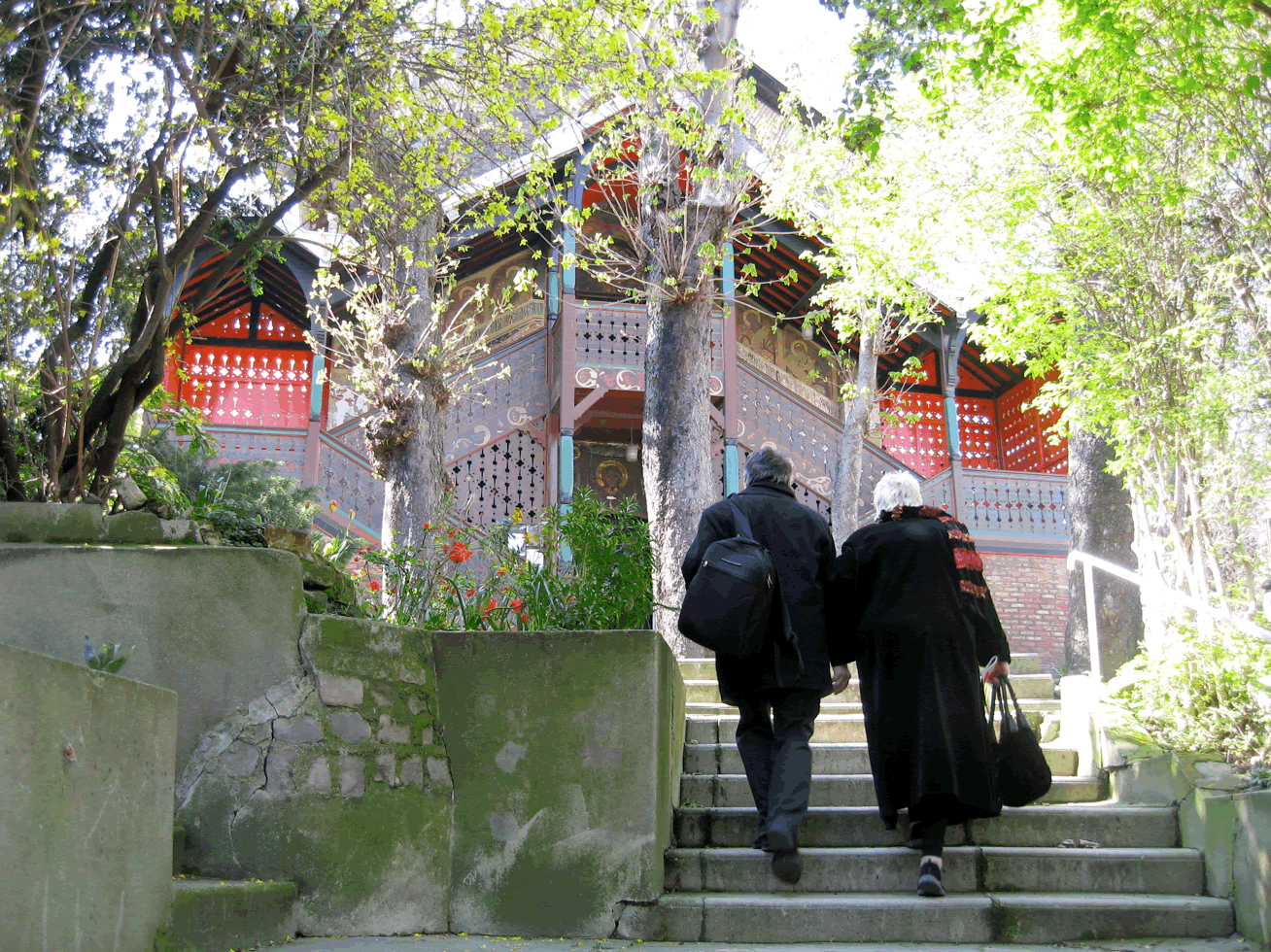
.jpg)
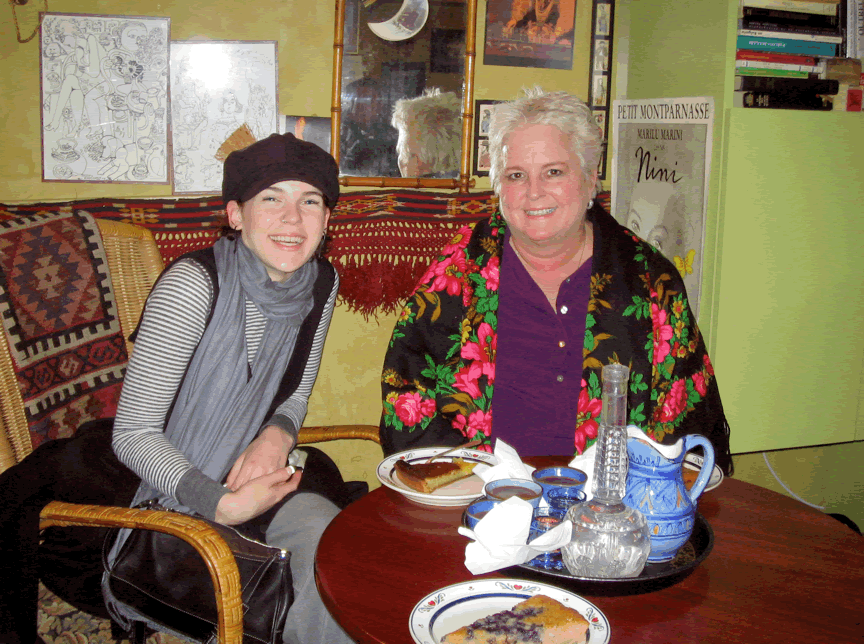
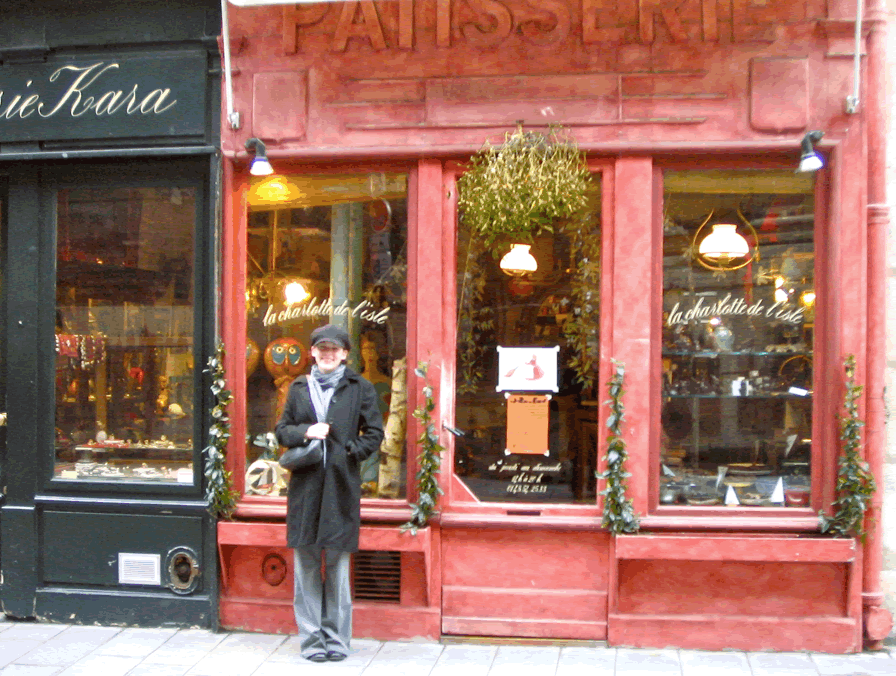
.jpg)
